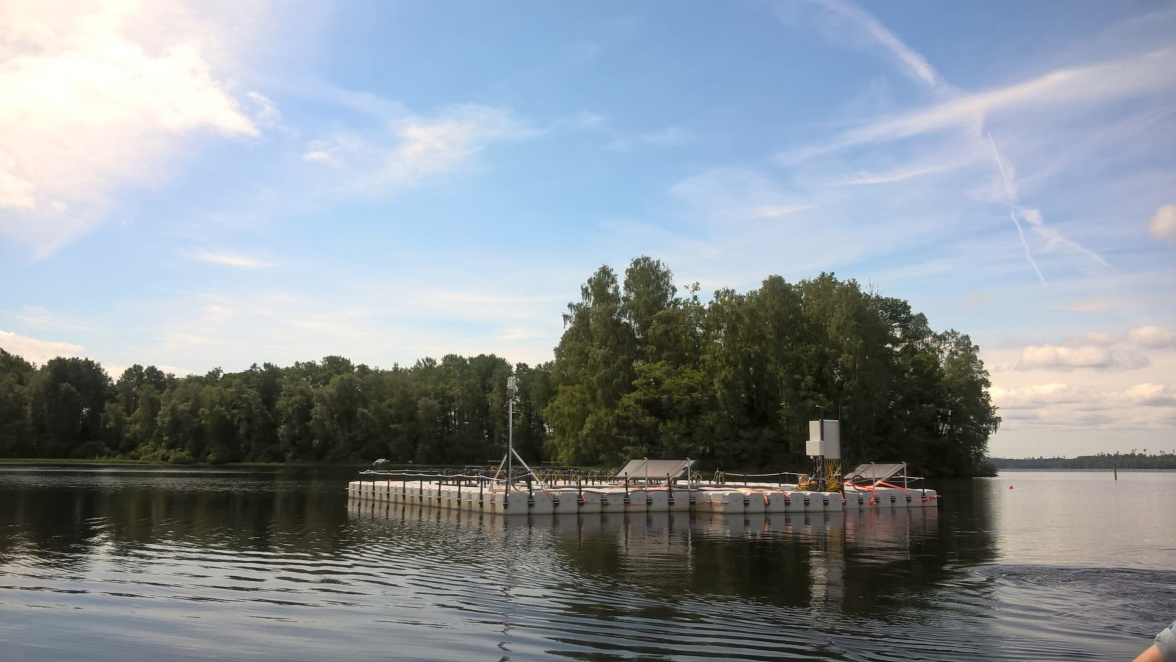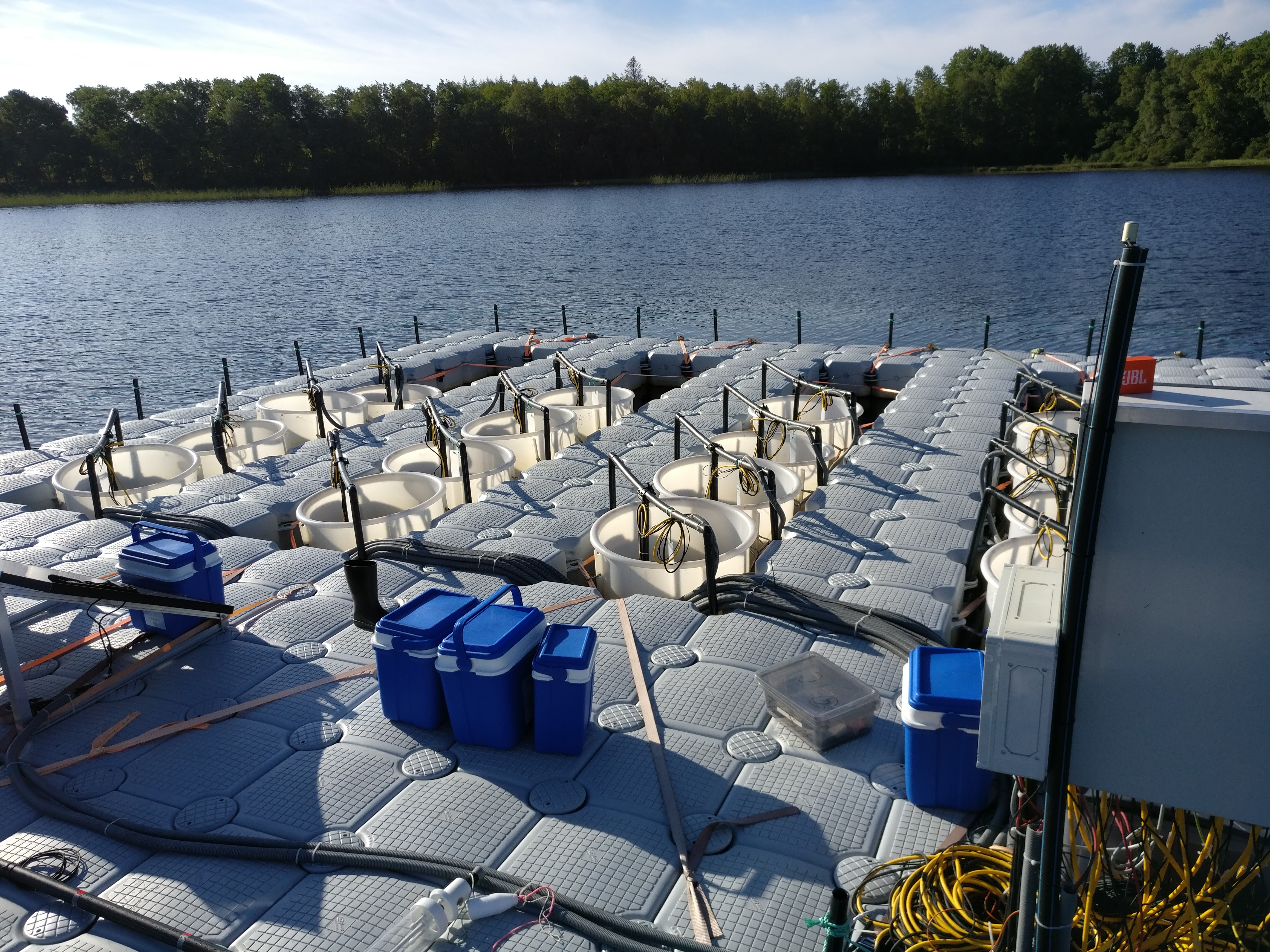Lake Bolmen, the drinking water reservoir for southern Sweden, as well as a source of local fish production and a popular tourist destination, is becoming increasingly browner. Since this trend is expected to continue, it is important to understand the ecosystem consequences of increased brownification as well as potential concurrent nutrient loading. In summer 2021 a mesocosm experiment was conducted in Lake Bolmen using Aquanet mesocosms and the SITES platform and infrastructure at Sydvatten’s Research Station Bolmen in Tiraholm. The aim of this five-week mesocosm experiment was to untangle the effects of increasing brownification and nutrient runoff for the pelagic food web (microbes to zooplankton) of Lake Bolmen. This experiment was a collaboration between Lund University (Johanna Sjöstedt with PhD students) and Halmstad University (Antonia Liess and Lars Gunnar Franzén).

At the beginning of June 2021, twenty mesocosms were filled with lake water containing a natural pelagic communality without fish. Five treatments with four replicates each were applied to the mesocosms and comprised of (1) control without any addition, (2) nutrient addition at high N:P ratio, (3) a nutrient addition with low N:P ratio, (4) a brown treatment where soil extract was added and (5) a brown high N:P treatment where soil extract was added as well as nitrogen. Soil extract was produced using dried and homogenized Lake Bolmen shore soils. Soil extract was added as a “pulse” once in the beginning of the experiment to the appropriate mesocosms to produce the state of brownification expected in 50 years. Soil extract also adds phosphorous (P) but very little nitrogen (N) to the mesocosms. Therefore N:P availability was adjusted in the brown high N:P treatment by adding dissolved inorganic nitrogen (DIN) and in the high N:P and low N:P treatment by adding appropriate amounts of soluble reactive phosphorous (SRP) and (DIN).
During the experiment, absorbance, pH, dissolved oxygen, dissolved and total nutrients, dissolved and total organic carbon, bacteria biomass, phytoplankton pigment concentration and composition, zooplankton abundance and species composition were recorded. Brown and brown high N:P treatments had lower pH, and dissolved oxygen, and higher DOC and absorbance than the control, high N:P and low N:P treatments. Phytoplankton pigment composition showed soil addition caused a succession of blooms. Chlorophyll a peaked during the first (week 1) in the brown and the brown high N:P treatment and later (week 4) in high N:P treatment. Early blooms in week 1 were likely driven by mixotrophs such as chrysophytes, cryptophytes, and dinoflagellates as indicated by patterns in chlorophyll c and carotin concentrations. Later blooms in weeks 2 and 4 were driven by green algae, as indicated by patterns in chlorophyll b concentrations. In the control and low N:P treatment, no pigment peaks were observed. Zooplankton composition and abundance showed similar time x treatment interactions, where copepods increase in dominance during week 2 in the brown and brown high N:P treatments and cladocerans dominate in week 4, but only in the brown high N:P treatment.
Overall, results from this experiment indicate that increased brownification will lead to shifts in phytoplankton community composition from autotrophic to mixotrophic phytoplankton groups, but that these shifts will be easily reversed once the pulse addition of terrestrial subsidies is over. The effects of brownification and nutrient subsidies propagate to the zooplankton levels and influence the relationship between copepods and cladocerans. Cladocerans, which are better food for fish, are disadvantaged shortly after a terrestrial subsidy pulse, a high frequency of these pulses is likely to have consequences for the fish production and fish community composition in Lake Bolmen.

Text by Antonia Liess (Halmstad University)